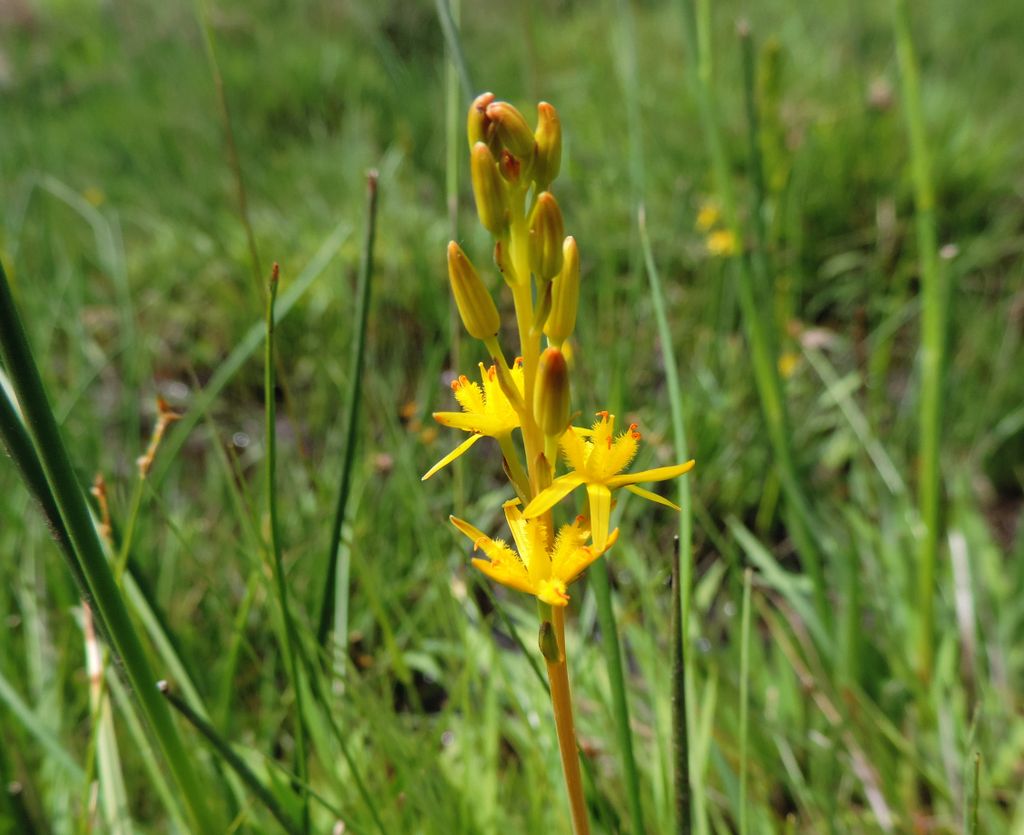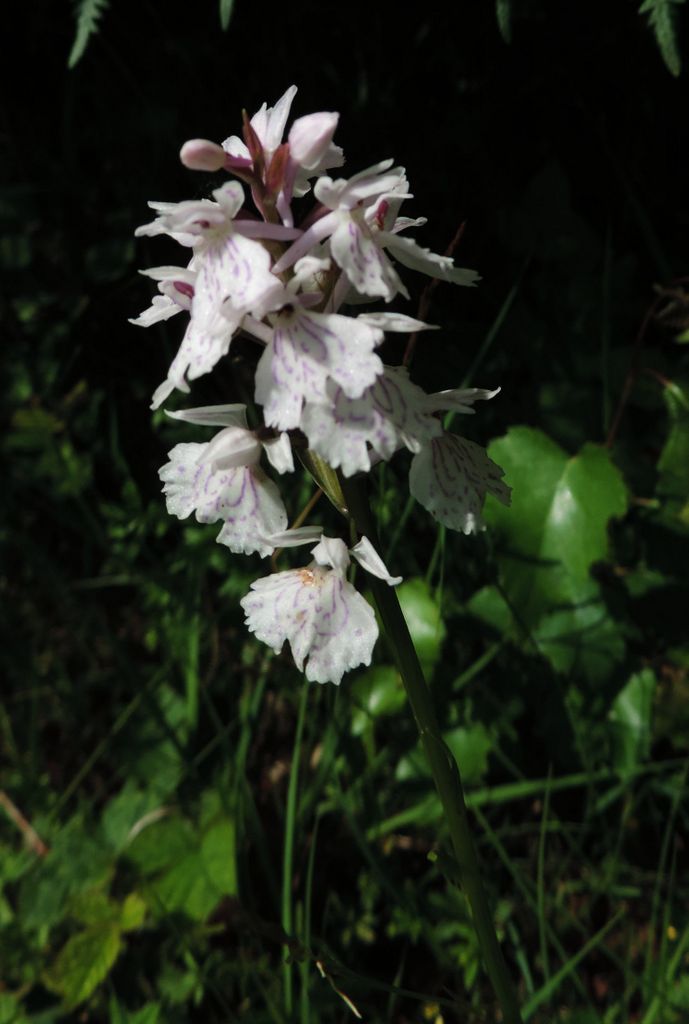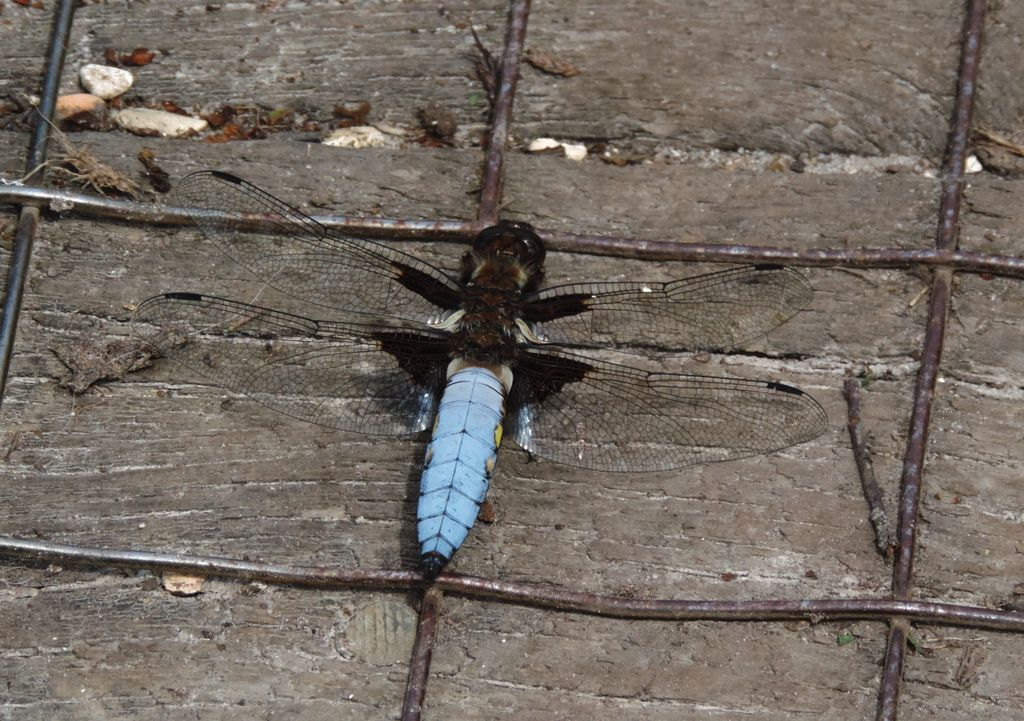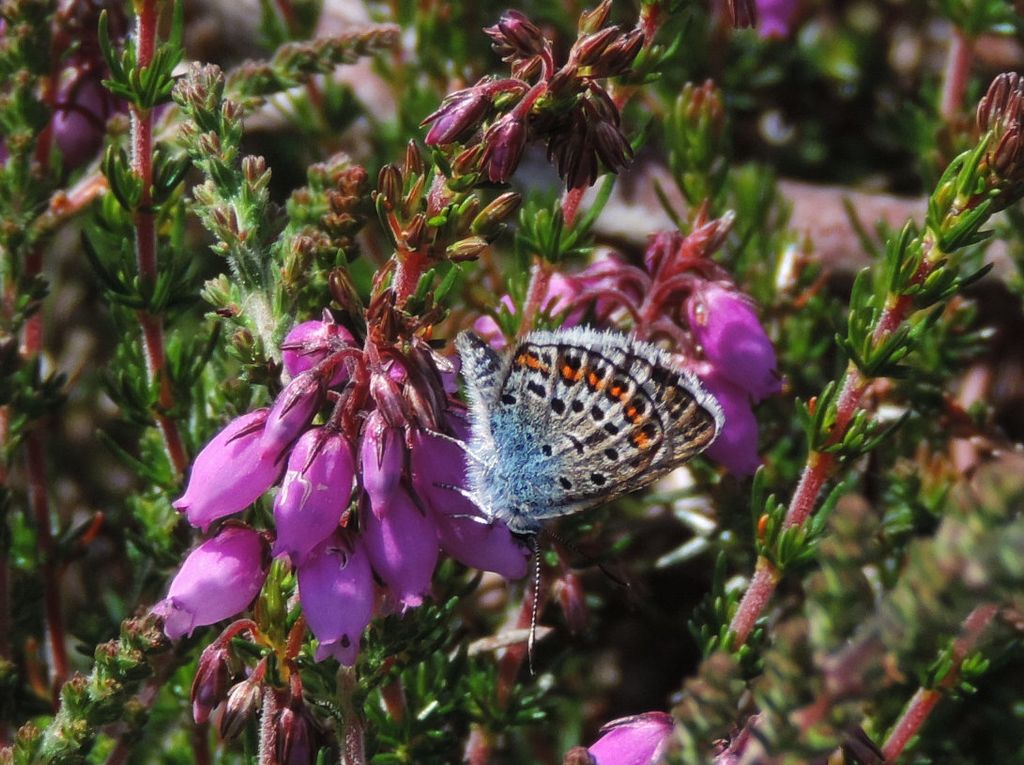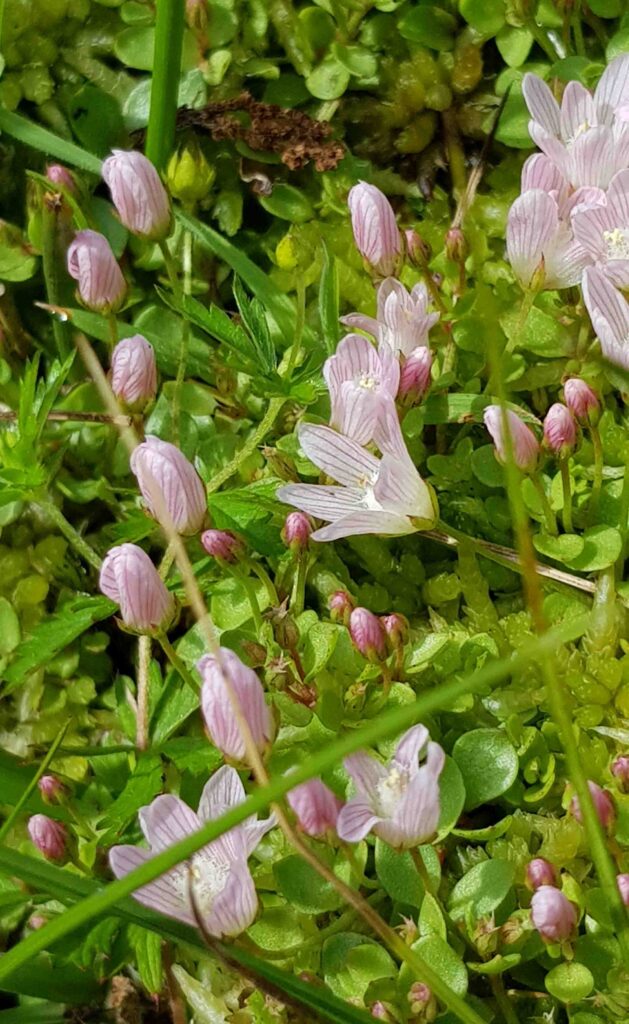Jan Haseler led a walk at Silchester Common on the sunny morning of Saturday 26 June. The walk started from the Impstone Road car park and headed out across the Common, where Heath Speedwell and mats of Heath Bedstraw were flowering in gaps between the Gorse bushes. An old wood bank had an interesting collection of trees, including several Wild Service-trees on which the chunky berries were beginning to form. Sessile Oaks, with stalked leaves, were growing next to Pedunculate Oaks, with virtually stalkless leaves. Bilberry and Common Cow-wheat were seen on the opposite side of the track. The path led down to a shallow valley where a small stream trickled through an area of mire. Tormentil, Cross-leaved Heath and several Heath Spotted-orchids were in flower on the bank and there were more Heath Spotted-orchids further into the mire, together with Cottongrass, flowering Bog Asphodel and the grey-green leaves of Marsh St John’s-wort. A newt, probably Palmate, vanished into a tussock of grass and a male Broad-bodied Chaser flew across the bog. On the other side of valley, the path climbed up onto a drier area of heath, where Bell Heather was in flower.
Turning northwards, the walk continued into an open area of heathland where significant effort has been put into clearing Gorse, scraping bare areas and constructing sheltering banks. Heath Groundsel was found on one bare sandy patch, while an adjacent patch had clumps of Sand Spurrey with tiny pink flowers. Lousewort, Heath Milkwort and Sheep’s Sorrel were growing in the short turf. Slender St John’s-wort was in flower on the side of a bank and Trailing St John’s-wort was found on another scraped area. An Emperor Dragonfly flew past and a Common Lizard was seen. Then the first Silver-studded Blue butterflies appeared. The majority of the twenty or so butterflies were blue males, but a few brown females were also seen. They were fairly easy to spot, flying low over the heather and not flying far before settling again. At the peak of the flight season, much higher numbers could be expected here, but following a long cold and wet spring, the start of the flight season had been delayed and appeared to be only just getting under way. A pair of Stonechats called from the top of Gorse bushes and a Common Heath moth was spotted down in the heather.
The walk continued southwards across the heathland to a spot where the track ran along the edge of a high bank above an extensive area of mire. Lily-of-the-valley and Wood Horsetail were found here. The first edition of the Reading Naturalist, published in 1949, describes this patch of Lily-of-the-valley. Then, as now, it did not appear to produce any flowers, but the plants have proved remarkably persistent. Down in the mire, pink flowers of Bog Pimpernel were draped across several of the tussocks of vegetation. The final section of the walk was through the woodland to the south of the heathy section of the Common in an unsuccessful search for White Admiral or Silver-washed Fritillary butterflies. Due to the late season, they did not appear to be on the wing yet. As on several other field excursions, the woods showed some signs of caterpillar damage, but a new growth of leaves seemed to be escaping further destruction. Male Fern, more Common Cow-wheat and more Wild Service-trees were noted on the walk back to the car park.
Pictures by Rob Stallard and Laurie Haseler

